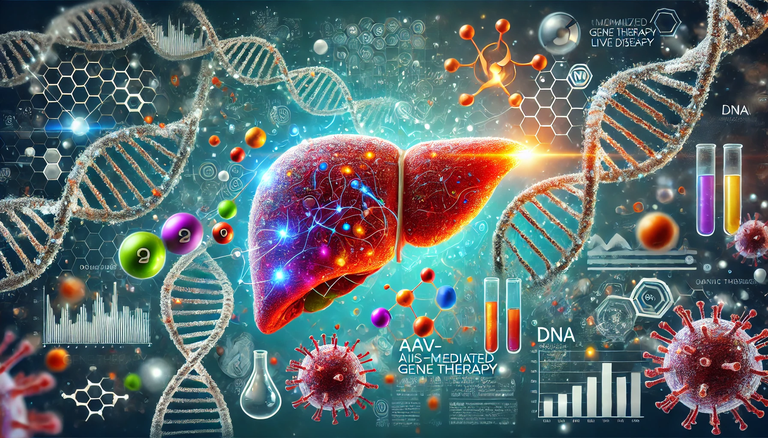Advancing Gene Therapy for Rare Liver Diseases: A New Review by Nicola Brunetti and Pasquale Piccolo

Nicola Brunetti and Pasquale Piccolo, prominent scientists at TIGEM, have recently published a comprehensive review on the state of liver-directed gene therapy using adeno-associated virus (AAV) vectors. Both authors are deeply involved in the development of gene therapy products for rare diseases, leveraging AAV vectors to address unmet medical needs. Nicola Brunetti, in particular, made a landmark contribution by managing the first clinical trial using AAVs for a lysosomal disease in humans. This groundbreaking work underscores TIGEM's leadership in translational research aimed at developing transformative therapies.
The Potential of AAV Vectors for Liver-Directed Gene Therapy
AAV vectors have emerged as a pivotal tool for delivering therapeutic genes to hepatocytes. Preclinical models, clinical trials, and an expanding list of approved gene therapy products highlight their safety and efficacy. In adult patients with hemophilia and other inherited metabolic disorders, a single administration of an AAV vector at clinically relevant doses has demonstrated stable therapeutic gene expression for several years. This durability offers a promising one-time intervention for genetic diseases, potentially replacing lifelong treatments.
Challenges in Clinical Applications
Despite their promise, the clinical application of AAV vectors—particularly for diseases requiring high doses administered intravenously—presents significant challenges. The review highlights several key issues:
- Pre-existing Immunity: A high prevalence of pre-existing antibodies against AAV capsids can hinder treatment efficacy.
- Immune Reactions: Activation of the innate immune system, including complement activation, can result in severe complications.
- Liver Toxicity: Elevated liver transaminases and liver growth can impact transgene expression.
- Patient Variability: Underlying conditions and inter-individual variability influence safety and efficacy.
- Genotoxicity: Potential integration of AAV sequences into the genome raises concerns about oncogenic risks.
The Path Forward
The review underscores the urgent need for a deeper understanding of vector-host interactions and inter-individual variability. Factors such as vector manufacturing protocols, expression cassettes, and quantification methods introduce variability that complicates clinical translation. Immunogenicity, in particular, remains a dose-dependent challenge. The review references Paracelsus’ adage, “Sola dosis facit venenum” (“The dose makes the poison”), to emphasize the balance required in dosing AAV vectors safely.
Emerging strategies to address these challenges include improved vector designs, novel capsid engineering, and advanced immunosuppression protocols. Moreover, ongoing research into the potential link between AAV and conditions like hepatocellular carcinoma or acute hepatitis aims to clarify safety concerns.
A Bright Future for AAV Gene Therapy
Despite the challenges, AAV vectors remain at the forefront of gene therapy for liver diseases. The increasing number of clinical trials and approved products reflects the platform's transformative potential. This review not only highlights the progress achieved but also provides a roadmap for addressing the obstacles ahead.
Nicola Brunetti and Pasquale Piccolo’s review is an essential read for researchers, clinicians, and industry professionals working on gene therapy. It combines a critical evaluation of current limitations with optimism for the field’s ability to overcome these hurdles, ensuring a future where a single gene therapy intervention could cure inherited liver diseases.
Their work underscores TIGEM’s enduring commitment to advancing gene therapy and improving the lives of patients with rare genetic disorders.
Read the review here
